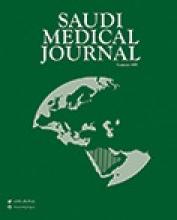Abstract
OBJECTIVE: To identify main risk factors for unintentional childhood poisoning in Ahwaz, Iran and to suggest possible causes and preventative measures.
METHODS: This is an epidemiological description and a case-control study. The study was undertaken in Ahwaz, Iran in 1996-1997. Cases were 100 children who were taken to one of the 17 Accident and Emergency Departments due to poisoning. For every case two controls were selected. Age, gender, hospital and date of attendance to Accident and Emergency Department were matched between cases and controls. All parents of the children were interviewed by using a questionnaire that included demographic and poisoning characteristic information.
RESULTS: Children without adult supervision (odds ratio = 4.8), and those with previous poisoning (odds ratio = 5.2) were at increased risk of poisoning (P<0.05). Drug poisoning was more common among children (60%), and most poisoning occurred inside the home (89%). Boys (65%), and children aged 2-4 years (79%) had more poisoning than others. In 75% of cases, poisonous products were accessible.
CONCLUSION: Adequate parental supervision and safe packing, storage and disposal of potentially hazardous substances could be the most important activities for prevention of childhood poisoning. Furthermore, manufactures and traders must by law put certain toxic household products and drugs in child resistant containers, and mark toxic medicines with warning labels or signs.
- Copyright: © Saudi Medical Journal
This is an open-access article distributed under the terms of the Creative Commons Attribution-Noncommercial-Share Alike 3.0 Unported, which permits unrestricted use, distribution, and reproduction in any medium, provided the original work is properly cited.






